Hyundai Bayon vs Kia Sportage – Which one offers the better deal?
Everyday use, family trips or long-distance drives – here’s where the differences show.
Discover whether Hyundai Bayon or Kia Sportage fits your lifestyle better.
Costs and Efficiency:
Price and efficiency are key factors when choosing a car – and this is often where the real differences emerge.
Hyundai Bayon has a decisively advantage in terms of price – it starts at 20100 £, while the Kia Sportage costs 29700 £. That’s a price difference of around 9677 £.
Fuel consumption also shows a difference: Kia Sportage manages with 1.20 L and is therefore significantly more efficient than the Hyundai Bayon with 5.40 L. The difference is about 4.20 L per 100 km.
Engine and Performance:
Under the bonnet, it becomes clear which model is tuned for sportiness and which one takes the lead when you hit the accelerator.
When it comes to engine power, the Kia Sportage has a decisively edge – offering 252 HP compared to 100 HP. That’s roughly 152 HP more horsepower.
In acceleration from 0 to 100 km/h, the Kia Sportage is significantly quicker – completing the sprint in 7.90 s, while the Hyundai Bayon takes 11.30 s. That’s about 3.40 s faster.
In terms of top speed, the Kia Sportage performs slightly better – reaching 203 km/h, while the Hyundai Bayon tops out at 179 km/h. The difference is around 24 km/h.
There’s also a difference in torque: Kia Sportage pulls clearly stronger with 350 Nm compared to 200 Nm. That’s about 150 Nm difference.
Space and Everyday Use:
Beyond pure performance, interior space and usability matter most in daily life. This is where you see which car is more practical and versatile.
Both vehicles offer seating for 5 people.
In curb weight, Hyundai Bayon is evident lighter – 1170 kg compared to 1526 kg. The difference is around 356 kg.
In terms of boot space, the Kia Sportage offers evident more room – 587 L compared to 411 L. That’s a difference of about 176 L.
In maximum load capacity, the Kia Sportage performs noticeable better – up to 1776 L, which is about 571 L more than the Hyundai Bayon.
When it comes to payload, Kia Sportage somewhat takes the win – 580 kg compared to 465 kg. That’s a difference of about 115 kg.
Who wins the race?
The Kia Sportage proves to be is largely superior and therefore becomes our DriveDuel Champion!
Kia Sportage is the better all-rounder in this comparison.
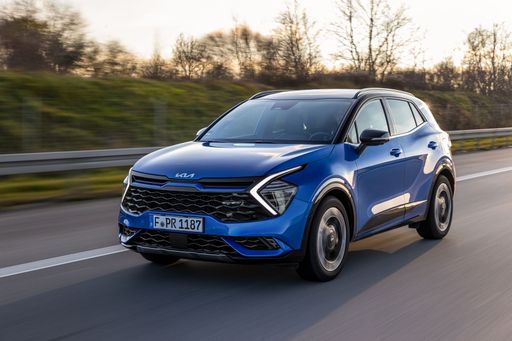
Kia Sportage
Hyundai Bayon
The Hyundai Bayon is a compact crossover that effortlessly merges practicality with modern design. Its sleek exterior and spacious interior make it an ideal choice for urban settings and longer journeys alike. With a focus on comfort and connectivity, this vehicle provides a smooth driving experience paired with advanced technology features.
details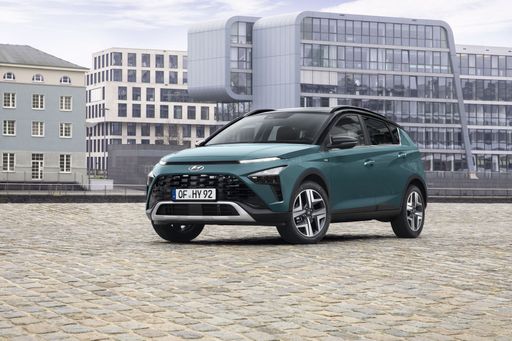 @ hyundai.news
@ hyundai.news
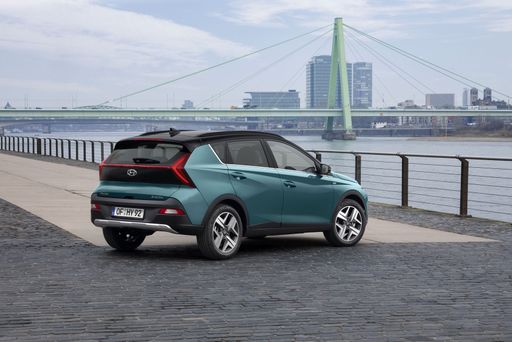 @ hyundai.news
@ hyundai.news
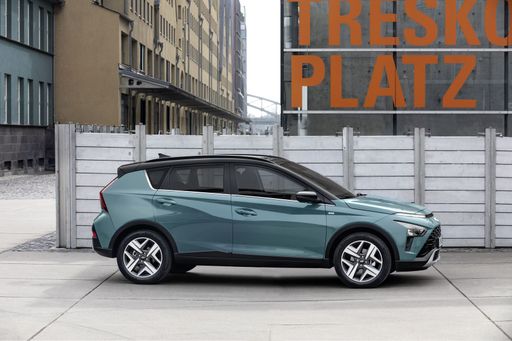 @ hyundai.news
@ hyundai.news
 @ hyundai.news
@ hyundai.news
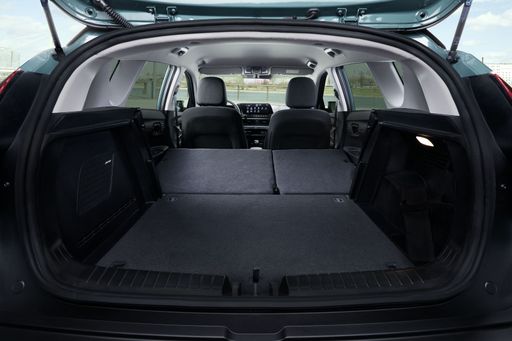 @ hyundai.news
@ hyundai.news
Kia Sportage
The Kia Sportage stands out in the crowded SUV market with its elegant design and advanced features. This vehicle offers a refined driving experience, combining comfort with responsive handling. Inside, the Sportage boasts a well-appointed cabin that provides ample space for passengers and luggage, making it an ideal choice for both city driving and longer journeys.
details @ press.kia.com
@ press.kia.com
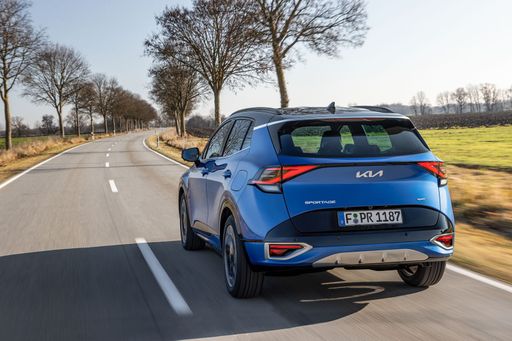 @ press.kia.com
@ press.kia.com
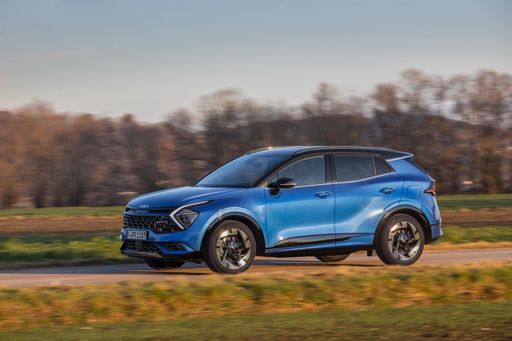 @ press.kia.com
@ press.kia.com
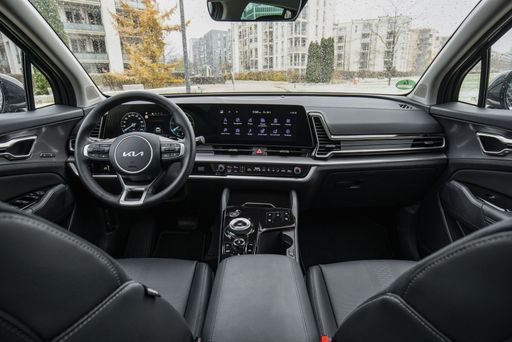 @ press.kia.com
@ press.kia.com

|

|
|
|
|
Costs and Consumption |
|
|---|---|
|
Price
20100 - 25800 £
|
Price
29700 - 44700 £
|
|
Consumption L/100km
5.4 - 5.5 L
|
Consumption L/100km
1.2 - 7.9 L
|
|
Consumption kWh/100km
-
|
Consumption kWh/100km
-
|
|
Electric Range
-
|
Electric Range
64 km
|
|
Battery Capacity
-
|
Battery Capacity
-
|
|
co2
124 g/km
|
co2
28 - 180 g/km
|
|
Fuel tank capacity
40 L
|
Fuel tank capacity
42 - 54 L
|
Dimensions and Body |
|
|---|---|
|
Body Type
SUV
|
Body Type
SUV
|
|
Seats
5
|
Seats
5
|
|
Doors
5
|
Doors
5
|
|
Curb weight
1170 - 1195 kg
|
Curb weight
1526 - 1905 kg
|
|
Trunk capacity
411 L
|
Trunk capacity
526 - 587 L
|
|
Length
4180 mm
|
Length
4515 - 4540 mm
|
|
Width
1775 mm
|
Width
1865 mm
|
|
Height
1500 mm
|
Height
1645 - 1650 mm
|
|
Max trunk capacity
1205 L
|
Max trunk capacity
1715 - 1776 L
|
|
Payload
460 - 465 kg
|
Payload
510 - 580 kg
|
Engine and Performance |
|
|---|---|
|
Engine Type
Petrol
|
Engine Type
Diesel MHEV, Petrol MHEV, Full Hybrid, Petrol, Plugin Hybrid
|
|
Transmission
Manuel, Automatic
|
Transmission
Manuel, Automatic
|
|
Transmission Detail
Manual Gearbox, Dual-Clutch Automatic
|
Transmission Detail
Manual Gearbox, Dual-Clutch Automatic, Automatic Gearbox
|
|
Drive Type
Front-Wheel Drive
|
Drive Type
Front-Wheel Drive, All-Wheel Drive
|
|
Power HP
100 HP
|
Power HP
136 - 252 HP
|
|
Acceleration 0-100km/h
11.3 - 12.4 s
|
Acceleration 0-100km/h
7.9 - 11.6 s
|
|
Max Speed
176 - 179 km/h
|
Max Speed
180 - 203 km/h
|
|
Torque
172 - 200 Nm
|
Torque
250 - 350 Nm
|
|
Number of Cylinders
3
|
Number of Cylinders
4
|
|
Power kW
74 kW
|
Power kW
100 - 185 kW
|
|
Engine capacity
998 cm3
|
Engine capacity
1598 cm3
|
General |
|
|---|---|
|
Model Year
2024
|
Model Year
2024 - 2025
|
|
CO2 Efficiency Class
D
|
CO2 Efficiency Class
D, E, F, B, G
|
|
Brand
Hyundai
|
Brand
Kia
|
What drivetrain options does the Hyundai Bayon have?
The Hyundai Bayon is available as Front-Wheel Drive.
The prices and data displayed are estimates based on German list prices and may vary by country. This information is not legally binding.
